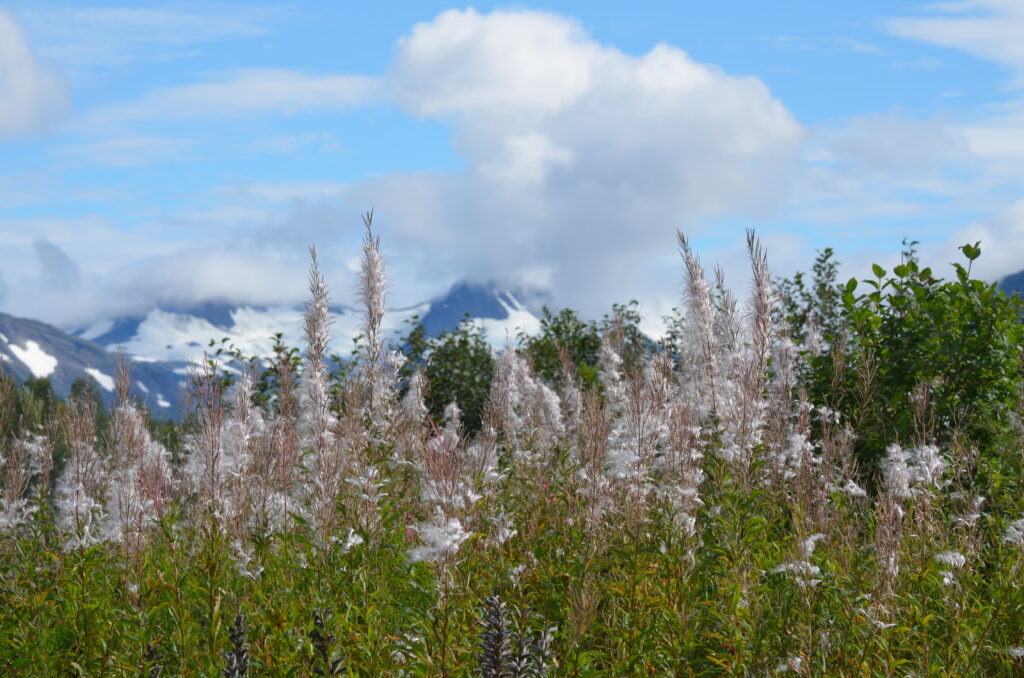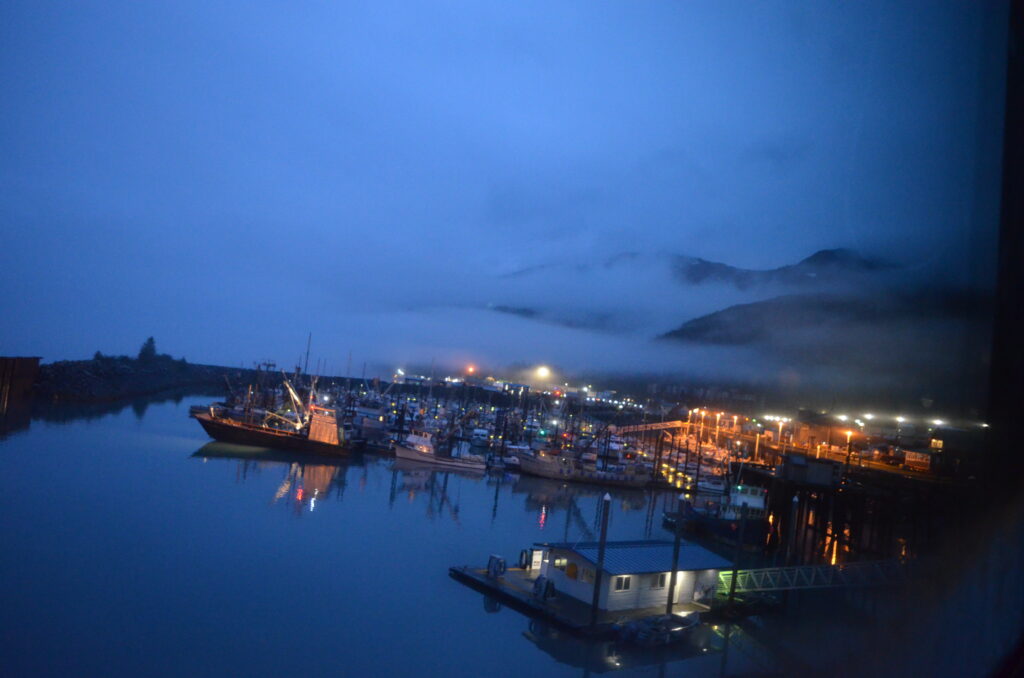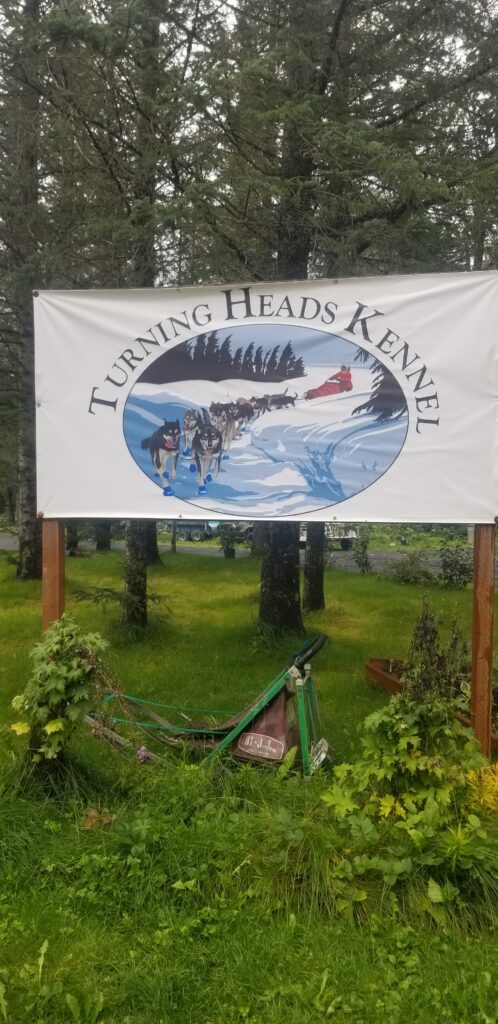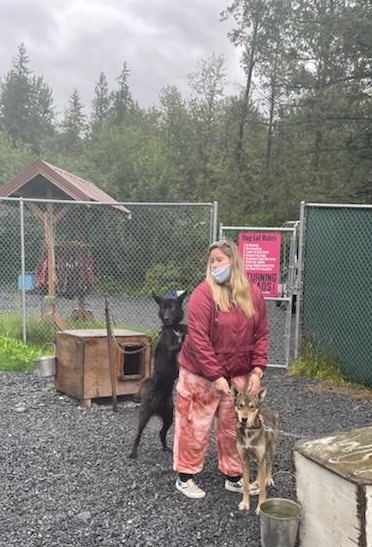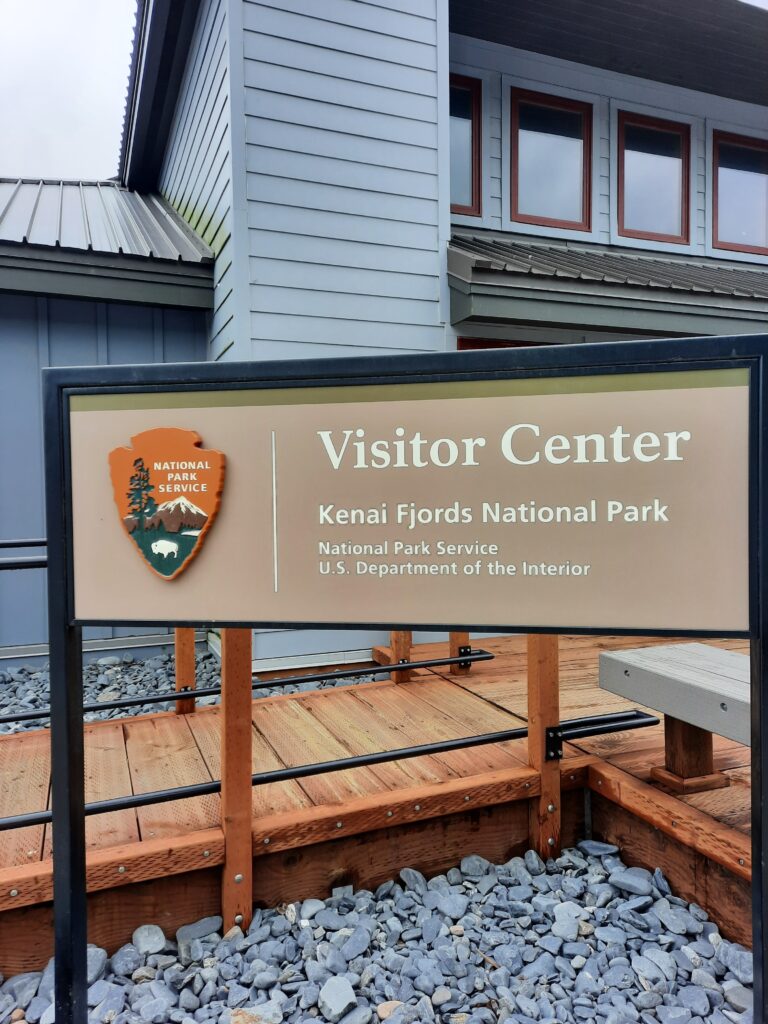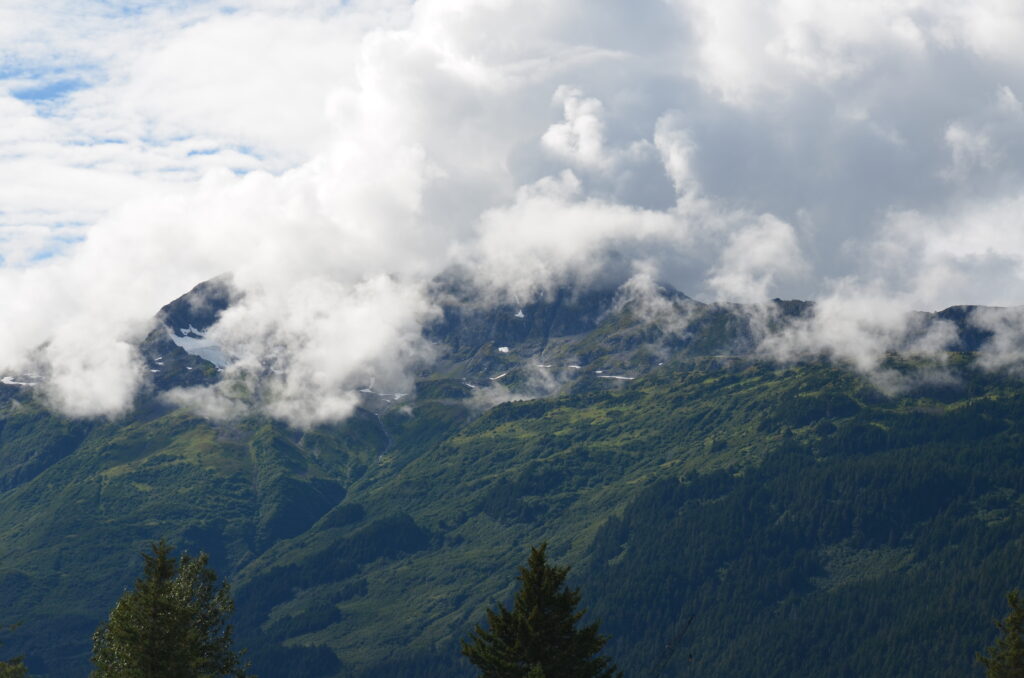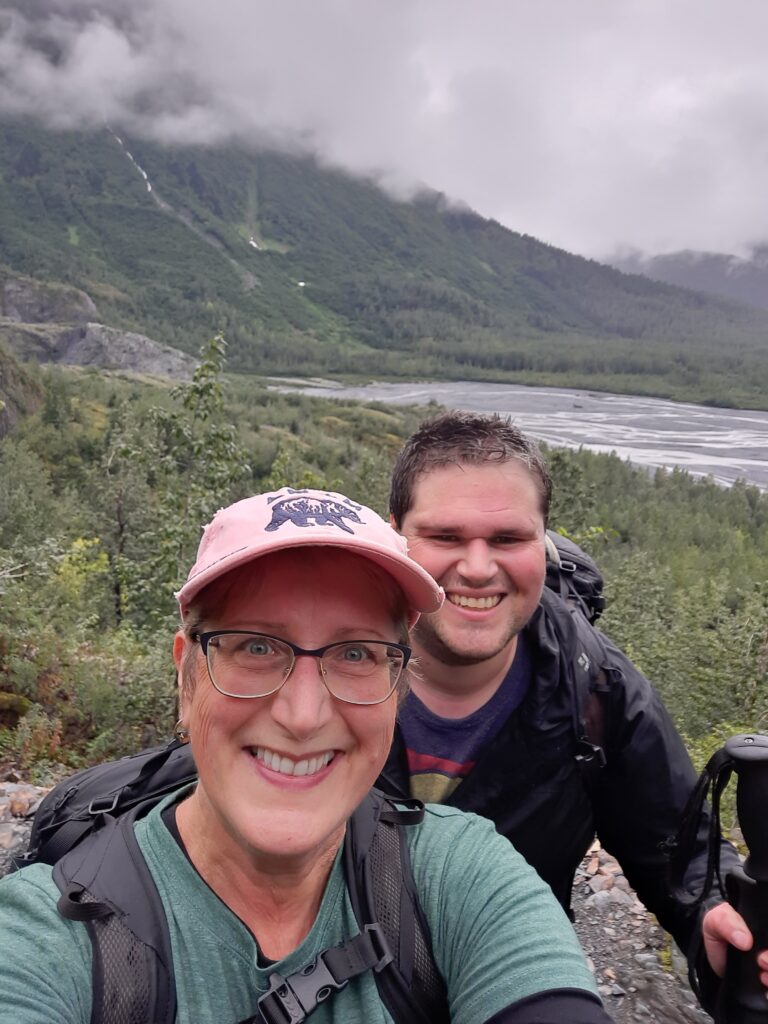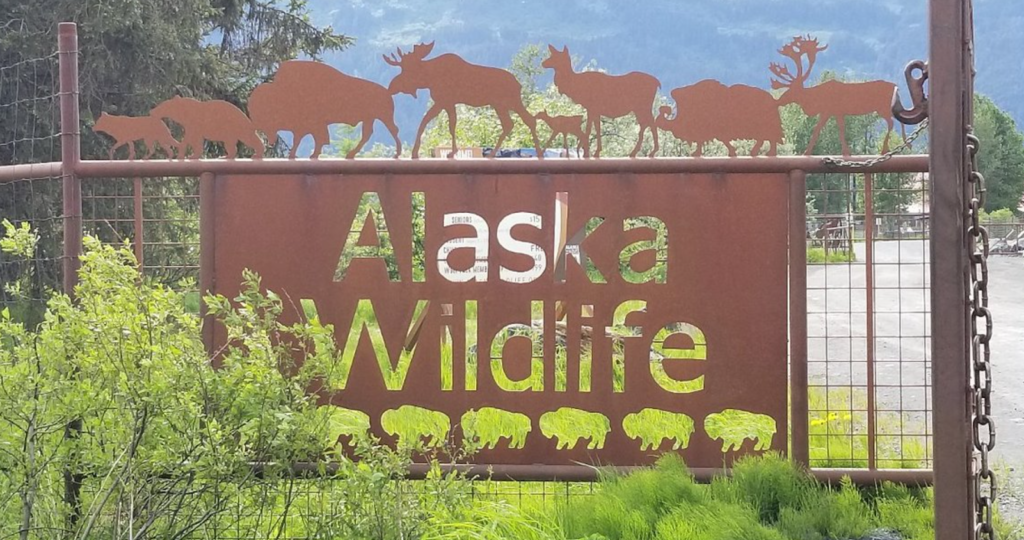SOUTH TO THE KENAI PENINSULA
“Sometimes paradise isn’t tropical” – unknown

As if we weren’t captivated enough with Alaska’s mesmerizing interior mountains and wildlife. We then discovered the spectacular coastal region of the Kenai Peninsula! It’s an area covered with vast glaciers, icy, blue waters teeming with wildlife, rivers and bays full of salmon and giant mountains covered with lush, green vegetation that rise right from the sea. It was a big contrast in what we saw just a few days earlier, but stunning in it its own way. In this region of Alaska, outdoor life unfolds right before your very eyes!
When people come to visit the Kenai Peninsula, my guess is that there are basically two main attractions they want to see-glaciers and marine wildlife. We were no different. Maybe it’s a bit selfish, but with all the alarming news about climate change, I wanted my family to see a glacier in person, before they’re gone, before humans’ effects have melted them completely away. I wanted my children to feel the cold wind that blows directly from them while parked on a boat 1/4 -mile away, and hear the loud, thundering cracks they give off as giant pieces of their ice armor crash into the sea (called calving). This was one of my personal Alaska family vacation goals, and I feel fortunate that they did have this opportunity!
Visitors to this area either come by land (car or train), or come by sea, since both the towns of Whittier and Seward are ports for many large cruise ships. Unless you prefer to see these outdoor resources by air (helicopter or plane), the most common method of experiencing these natural draws is by one of the many tour boats that offer trips. The advantage to travelling by boat is that you’re right on the water w/the marine critters, and/or see the glaciers right up close. We had booked two trips, one from Whittier to explore the rich, diverse Prince William Sound, and the other out of Seward, to visit Kenai Fjords National Park and Resurrection Bay. Both locations advertise the chance to see glaciers, lots of wildlife and spectacular seaside landscapes, and depending on the season, they probably both do. We started our coastal adventure coming into the City of Whittier, with a quick stop to see the scenic Portage Glacier, a hanging, mountain glacier right outside of town.
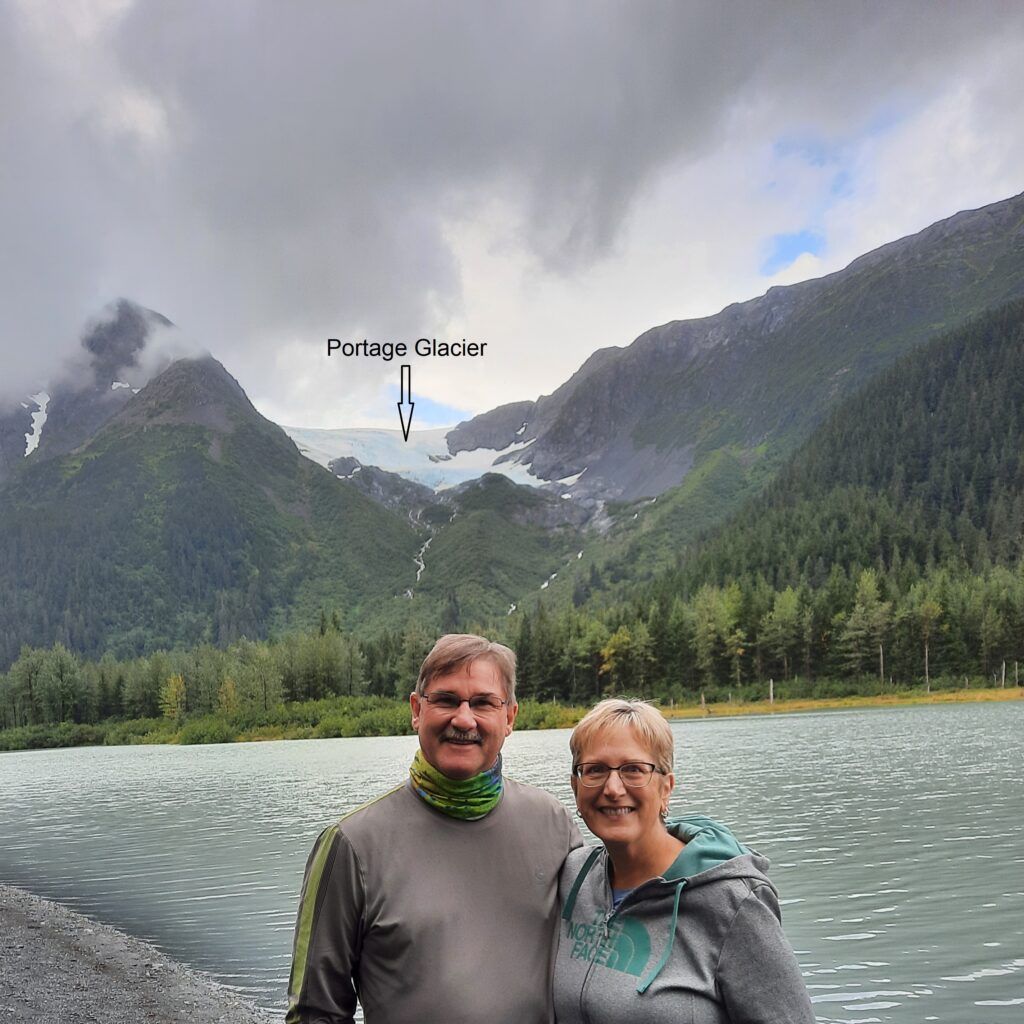
One of the unique aspects of traveling to Whittier by car or train is how you actually get into the city. There’s only one way in-through a 2.5-mile tunnel, called the Anton Anderson Memorial Tunnel. This tunnel is the longest combined vehicle-railroad tunnel in North America! You literally drive on the train tracks, and because it’s only one lane wide, you must time your trip appropriately, since traffic is alternated every half hour. This engineering wonder was designed to tolerate -40 Fahrenheit temperatures and 150 mph winds, and in its time, saved millions of dollars by constructing only one tunnel to allow both vehicle and train traffic. It was pretty cool driving through it! Click the link below to take a short ride through the tunnel!
https://youtube.com/shorts/UDsn5u3E-jc
We were certainly not disappointed after our boat tour in Whittier, having seen over 20 of the massive rivers of ancient ice (several up close) along with several species of wildlife, including Stellar Sea Lions, Harbor Seals, Sea Otters and lots of sea birds. There was one large Princess Cruise Ship docked in Whittier while we were there, but most of them had already disembarked and took the train (the famous Alaskan Railroad) up to Anchorage and Denali for their land tour. Before heading to Seward to begin our visit to Kenai Fjords National Park, we arranged for a stop to learn about one of Alaska’s most historical, and important, modes of transportation-dog sleds.



Historically, sled dogs were the primary method of transportation during the winter months in Alaska. Natives used sled dogs as a way to help with their nomadic lifestyle as they followed herds of caribou. The dogs helped natives move their camps efficiently in the cold winter climates. During the gold rush in Alaska, sled dogs provided a vital lifeline for the miners in the interior with the outside world. Ships would unload cargo in Seward, Alaska and sled dogs would then deliver that cargo as far as 1200 miles away in the town of Nome, Alaska. Today, dog sledding is more of a sport, than a necessity, although in some remote areas, it’s still an important way to travel.
To learn about this celebrated culture, we chose Turning Heads Kennel near Seward, an award-winning sled dog training kennel. The owner, Travis, has been training sled dogs most of his life, and competes in the famous 1,000 (+/-) mile Iditarod Race. This past March he placed 5th overall. When you think of a sled dog, it’s hard not to picture a beautiful Siberian Husky. Siberian Husky has many years of history in Alaska. Teams of Siberian Huskies were used to haul freight and mail over supply trails in Alaska during the winter. But the kennel does not breed or train Siberian Huskies. The kennel breeds and trains what’s known as Alaskan Huskies. As it was it explained to us, Alaskan Huskies are not purebred dogs. Many Alaskan huskies have genetic traits linking them to Siberian huskies, Alaskan malamutes, German-shorthaired pointers, Irish setters, and other hunting dogs. These breeds were bred for various reasons but, in the end, the goal was to create a better sled dog. We then got to meet some of the 75 dogs Travis owns-of all ages! We were all really surprised how many different colors they were.
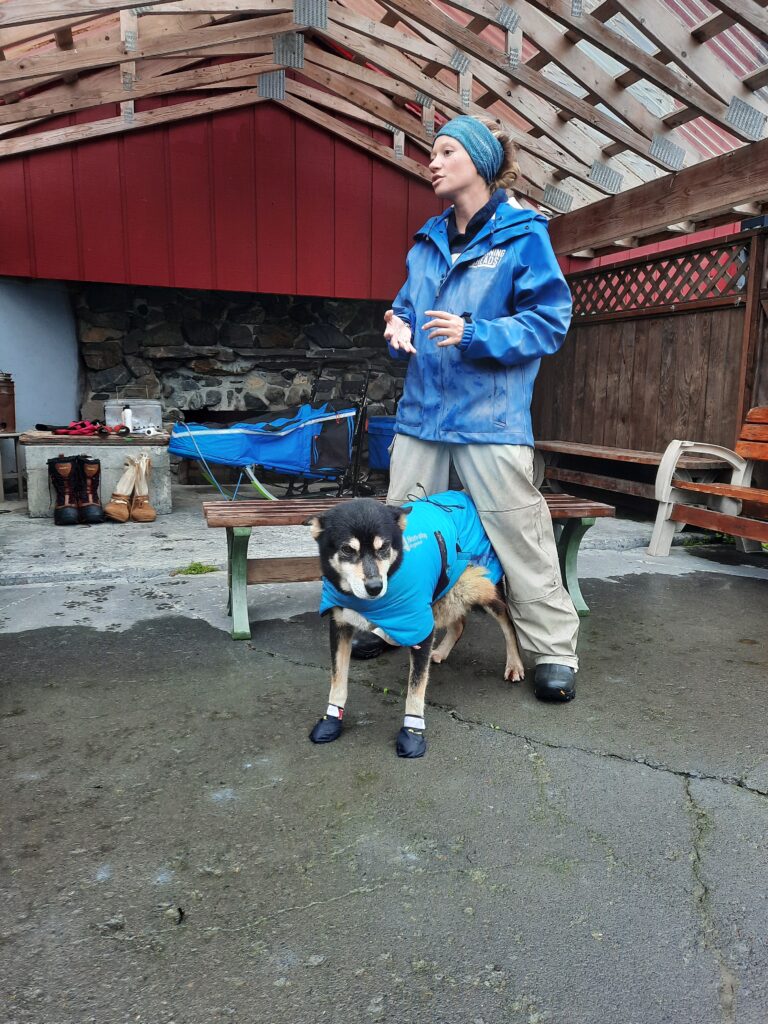
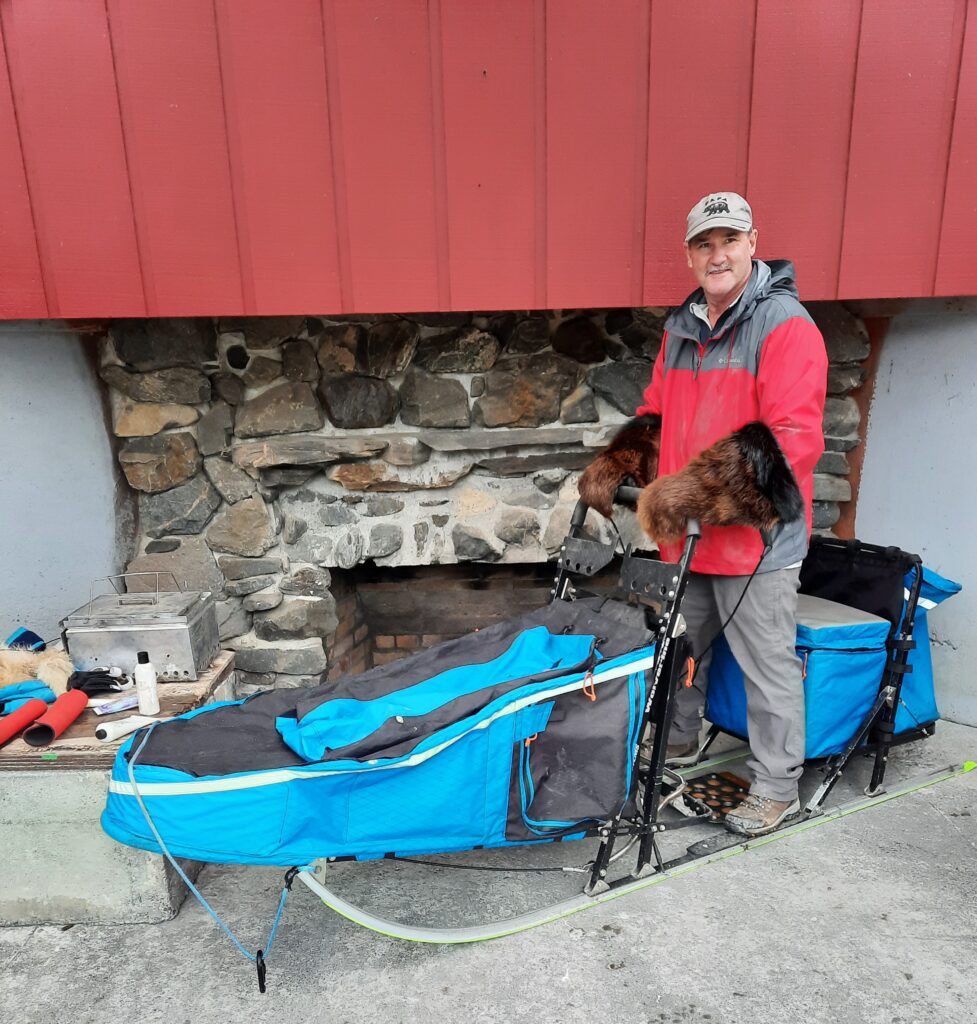
Although it was interesting hearing about the training the dogs go through to successfully pull a sled, their equipment and even their breeding program, the most obvious thing came across to us (and heard about) was the love and care they give each dog. From specific diets and vaccinations, to the special safety equipment they use to protect each dog from the extreme weather, the mushers and handlers (as they’re called) focus 100% of their time on the health and well-being of their dogs. Each dog is evaluated to see if they have the ability, and individual disposition, to become a sled dog. If the owners don’t feel the dogs would be good sled dogs, they work with several dog adoption centers to place the dogs in caring families. You could see the different “personalities” of the dogs we got to meet. Some were shy and stayed in their houses, but most were affectionate and accepting of us. The puppies we met were, well, puppies! They jumped, and nipped, and tugged and howled, at us, and at each other, over and over again, until some of them plopped over from exhaustion and went right to sleep, right at our feet! But the real highlight of our visit was the training run we took on of the trails in a sled outfitted with wheels for “off-snow” training. The dogs were amazing! When getting them ready, every dog was jumping and barking with excitement, hoping the staff would “pick me, pick me!” They all just wanted to go, go, go, and were incredibly responsive to the commands given to them while guiding our sled along the narrow trails. It was really cool and we learned a lot about this honored Alaskan tradition!

After saying goodbye to many of our new, 4-legged friends, we headed to Kenai Fjords National Park. The NPS describes this 608,000-acre park as “a land where the ice age lingers.” It was established to protect the many glacial fjords, over 40 glaciers that flow from the Harding Icefield, and the rich variety of plant and animal communities that inhabit the cold, food-rich waters, and surrounding forest lands.
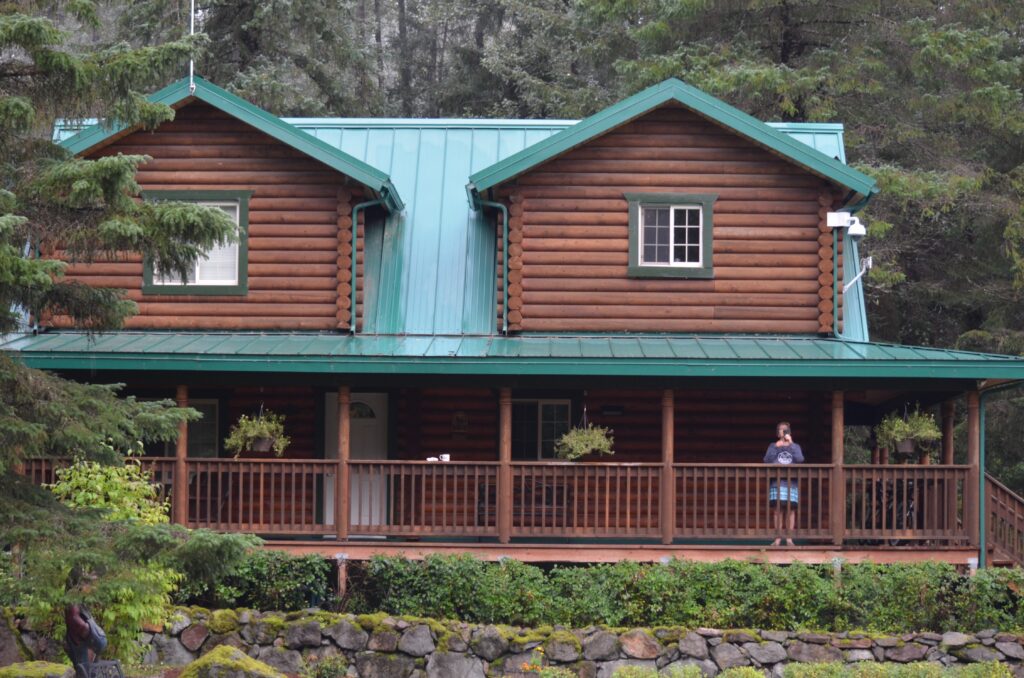

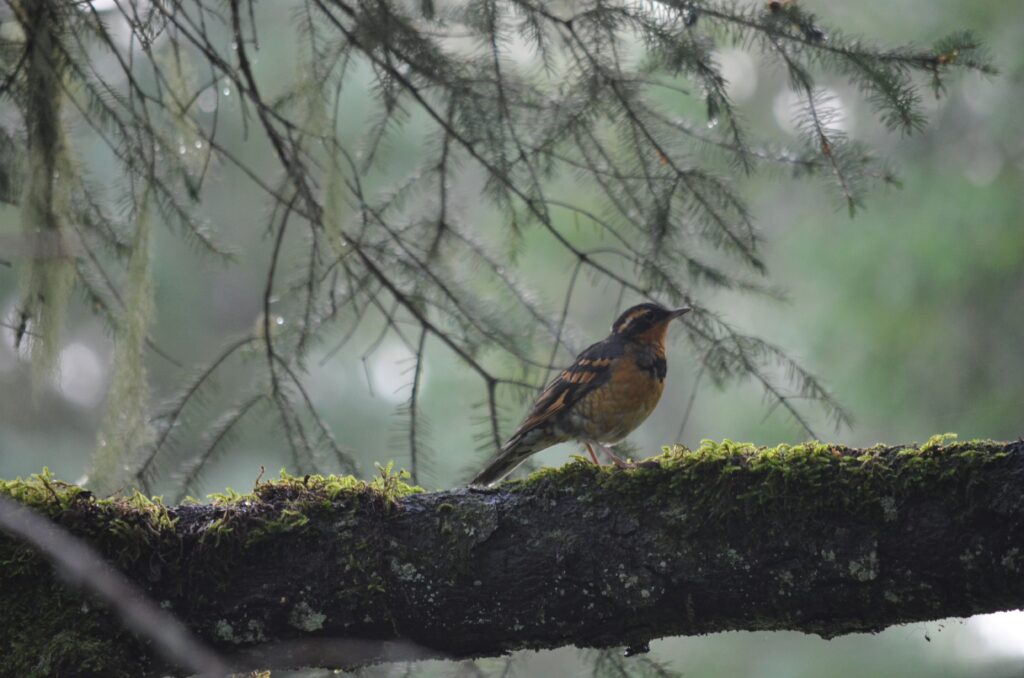
Most of the park is only accessible by boat, and 50% of the park is covered in ice. As a sidenote, a fjord is a is a long, deep, narrow body of water that reaches far inland. Fjords are often set in a U-shaped valley with steep walls of rock on either side. Once again, our choice was a boat tour into Resurrection Bay where we sat in ice-filled waters staring and photographing a colossal glacier called Aialik, that seemed to be only a short stones-throw away. Above us, Mountain Goats and and a single Black Bear fed on the steep, vegetated mountain slopes. But perhaps one of the most memorable moments was when the captain navigated us right into the middle of several different pods of Orcas (Killer Whales) that were feeding and playing only a few feet from our resting boat! For 45 minutes we were literally surrounded by 20-30 of these magnificent marine mammals, as cell phones recorded and cameras clicked. It was an incredible experience!
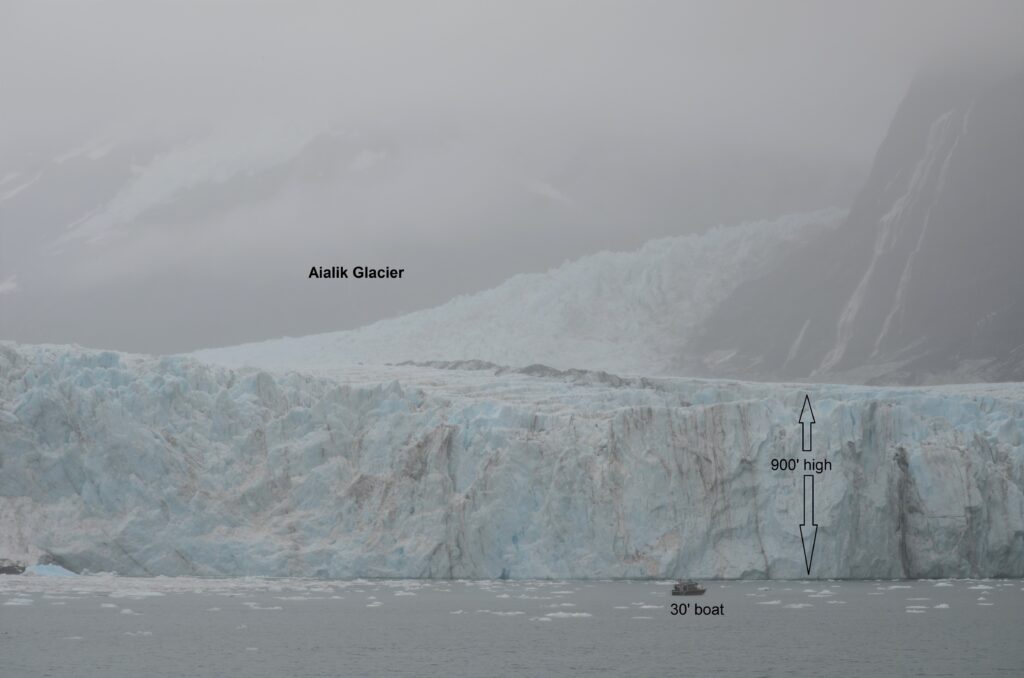
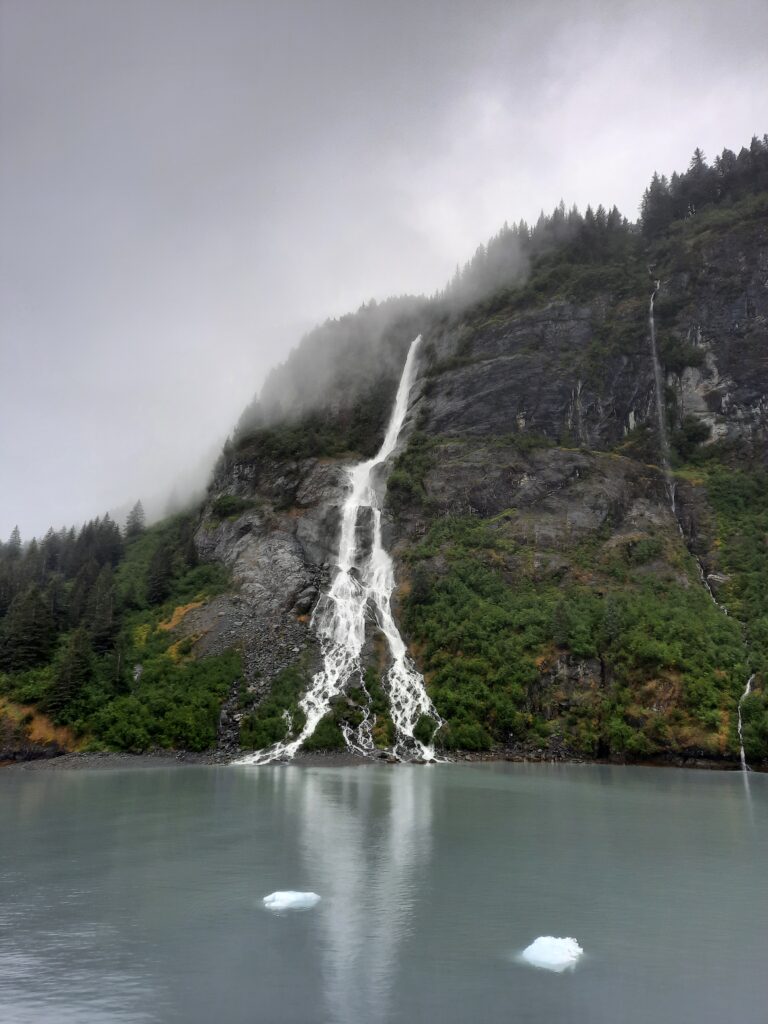


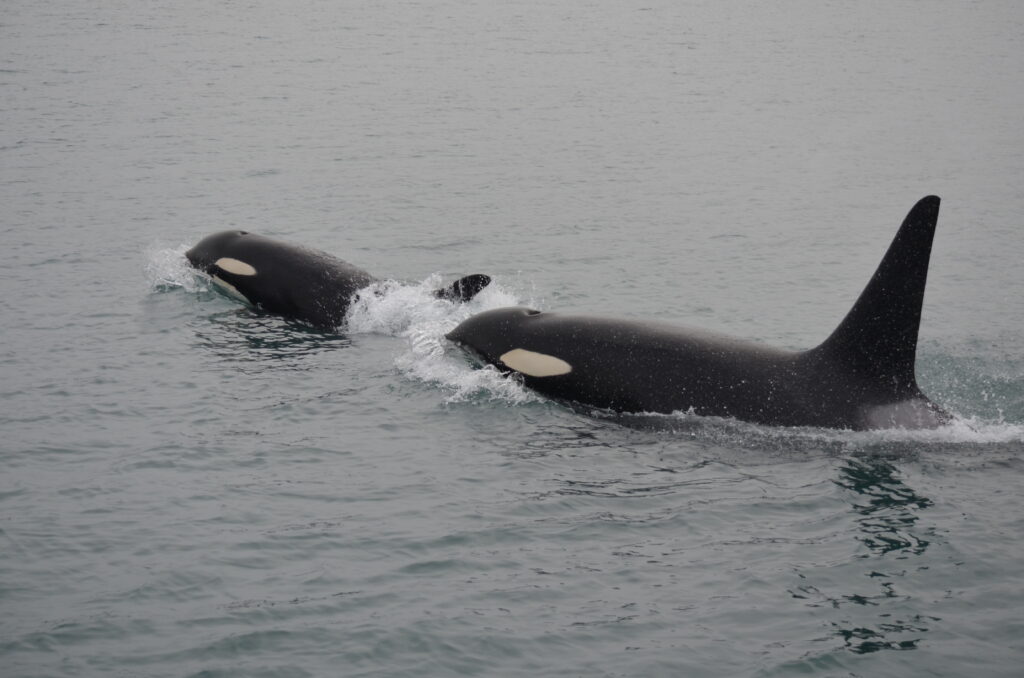
click on the link below to watch some Orcas cruise by our boat in Resurrection Bay
The next day we ended our trip to Kenai Fjords National Park with an “attempted” hike to go out on the popular Exit Glacier, a glacier that’s found about 10 miles inland, and ends as an ice-cold river flowing out the bottom. I say “attempted” because none of the four us ever made it to the top. The steep, 2-mile trek to the glacier entrance was a bit too much for us, as the guides’ pace was approaching an Olympic Mountaineering record! It probably didn’t help that I drank all my water and ate all my snacks in the first mile! Of course, the other participants were much younger, hard core, adventure seekers that rolled their beady, little eyes at me when I asked to stop to catch my breath and grab a quick drink. It was at this point Theresa, Tyler and I decided that this voluntary activity wasn’t fun anymore, so I graciously thanked them, and we headed back down the mountain, a bit defeated, but still standing! Darby on the other hand, decided she wanted to press on with the others, so we let her do her thing, and the three of us headed down the mountain to the “easy-viewing area” for the glacier (otherwise known as the over 55 glacier hike). Weren’t we surprised about a half-hour later when we returned to the parking lot, and there was Darby walking straight toward us, with half a smirk on her face! She told us she had turned around about 15 minutes after we did, and was back at the car for 45 minutes! It looked a hell of lot easier in the brochure!
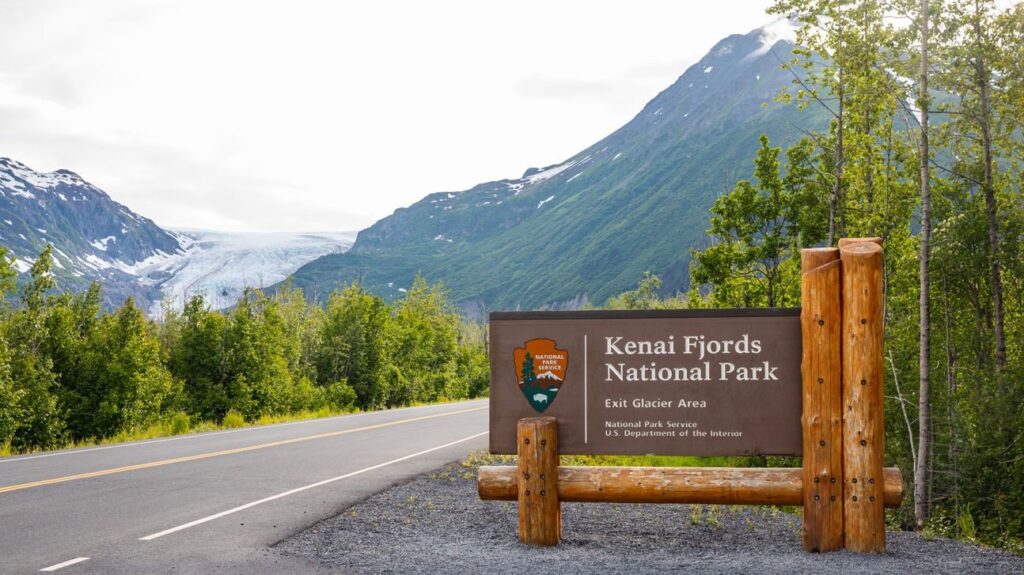
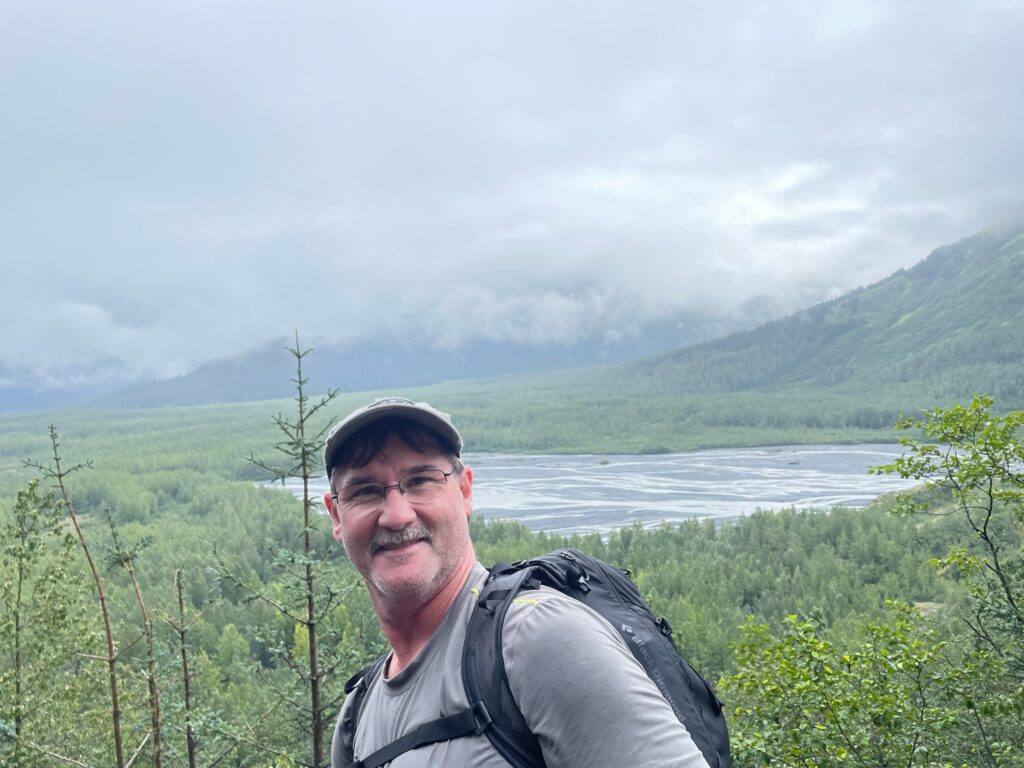
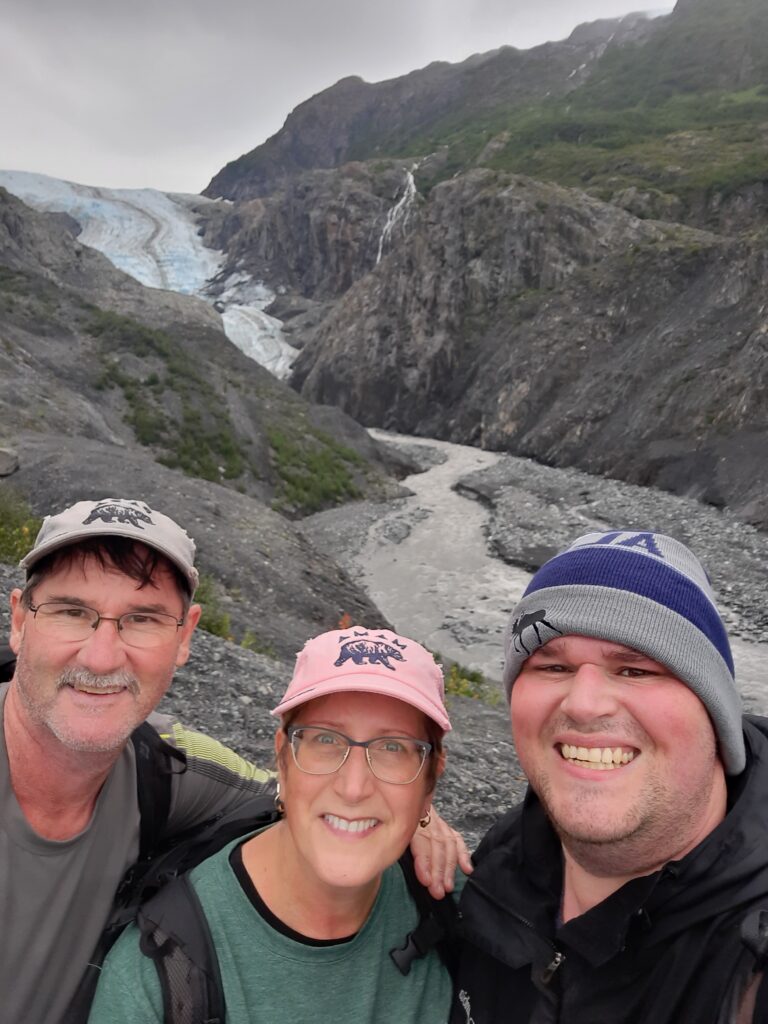
On our last day, we wrapped up our world-wind Alask wayan trip with a couple quick visits to some local conservation centers-the Alaska Sea Life Center in Seward, and the Alaska Wildlife Conservation Center near Girdwood. These were very relaxing, educational and enjoyable-just what we needed after our uphill sprint to Exit Glacier!
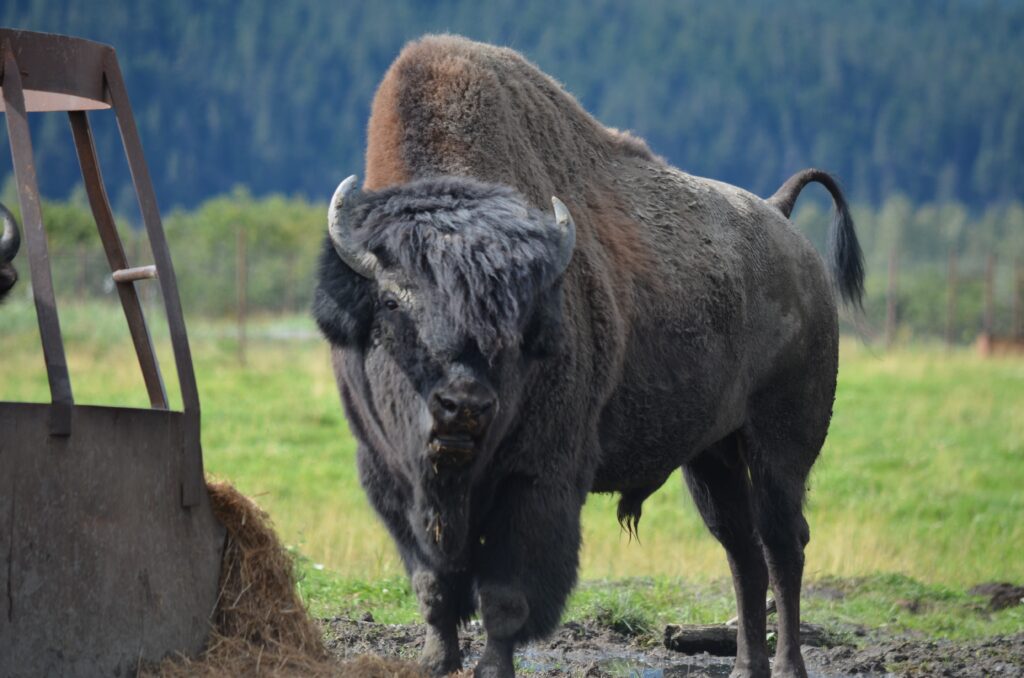

Although we wished we had more time (don’t you always?), our short adventure to Alaska was fantastic! From gazing at the highest mountain in North America and viewing some of its beautiful wildlife in their natural settings, to experiencing the cold winds and loud fracturing noises of massive, crystal-blue glaciers. It took us three years to get here, but it was well worth the wait! If you love the outdoors with breath-taking scenery every direction you look, rich in wildlife, history and culture, then get yourself to Alaska! It truly is the “Last Frontier!”
